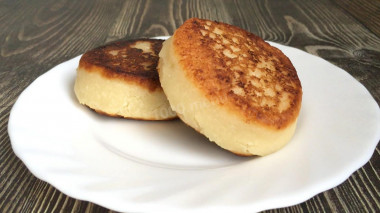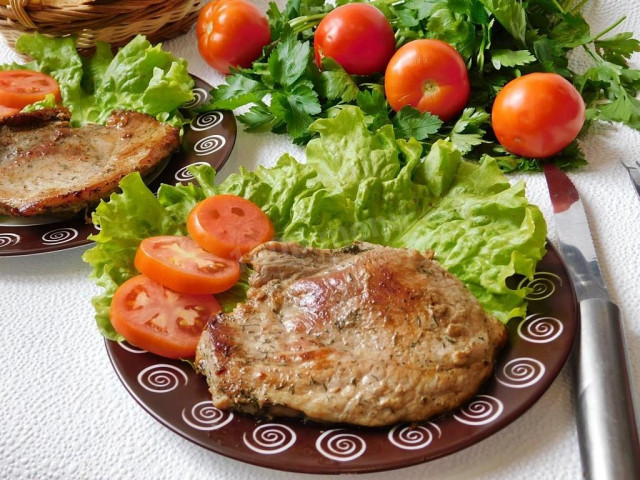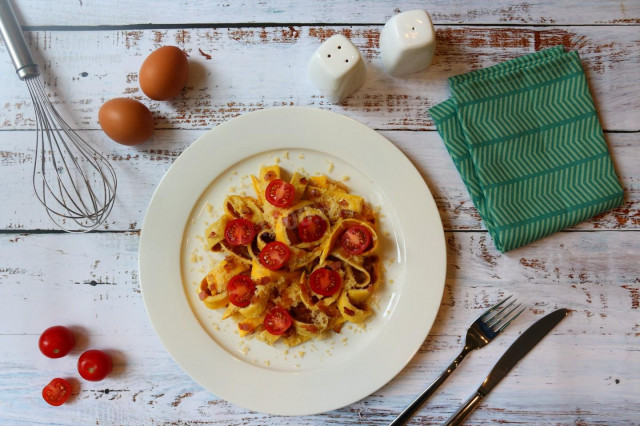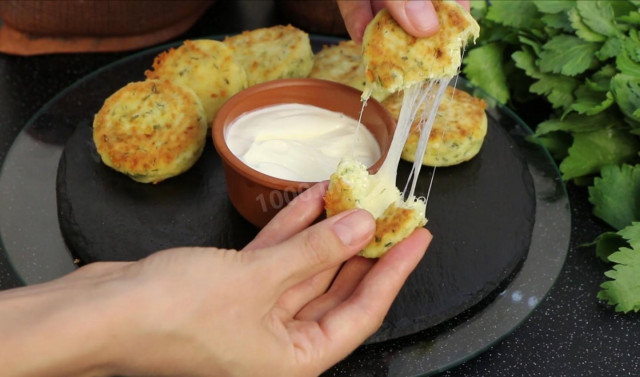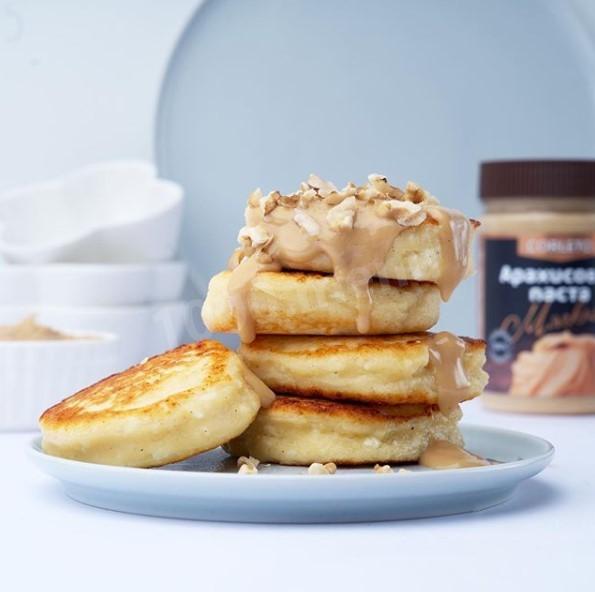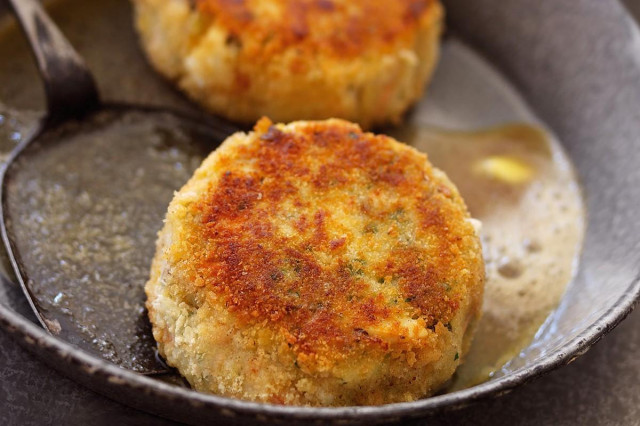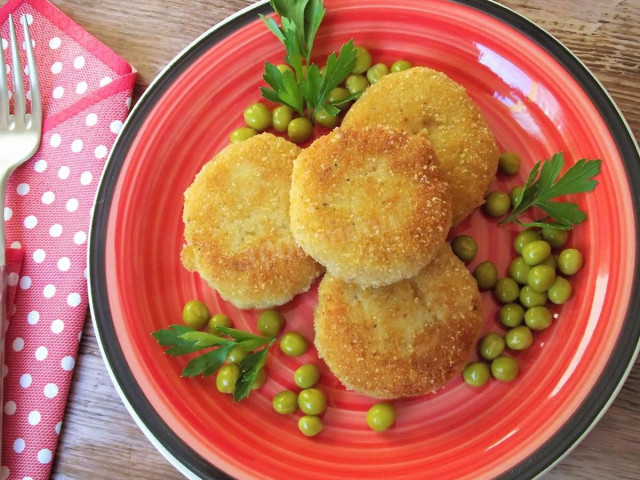Composition / ingredients
Cooking method
Mix cottage cheese with sugar.
Add flour, knead the dough.
Form a sausage from the dough, cut into circles.
Heat the oil in a frying pan over medium-high heat.
Put the cheesecakes in a frying pan and fry for 1-2 minutes.
Turn over, cover with a lid, fry on low heat for 8-10 minutes.
Syrniki (Ukrainian sirniki; from Ukrainian sir — cottage cheese), cottage cheese — a dish of Belarusian, Russian, Ukrainian and Moldovan cuisines in the form of pancakes, fried cakes of cottage cheese mixed with flour or semolina (some cooks believe that flour is not added to real syrniki) and eggs. Usually cheesecakes are fried in vegetable oil, but some recipes require baking them in the oven. There are recipes for cheesecakes with a recommendation to bake them for a couple.
Recipe feature — cottage cheese should be thoroughly squeezed and rubbed (for example, through a sieve or in a blender): the better it is pressed, the less flour is required to obtain a plastic dough. Ideally— flour is just a little bit. Cheesecakes without flour at all, however, are breaded and deep-fried.
Simple cheesecakes and cheesecakes with raisins are the most popular, but cheesecakes with other additives are also common, for example carrots, dried apricots, apple, pear, nuts, potatoes. In rare cases — green onions or dill.
Cheesecakes can be served on a plate or in a pot with condensed milk, sour cream, thick fruit and berry jelly or jam. Unsweetened versions of cheesecakes can also be served with ketchup or mayonnaise.
The word "cheese" in most Slavic languages means various types of fermented dairy products, including cottage cheese, but in Russian it stopped being used in the latter meaning early. The name "cheesecakes" is Ukrainian in it, replacing the etymological "cottage cheese".
WHERE DID THE WORD "CHEESECAKES" COME FROM?
Cheesecakes are called cheesecakes, not cottage cheese, because the word "cottage cheese" did not exist then.
When did it appear?
Peter the Great brought to Russia not only tobacco and potatoes, but also many other products unknown to us, among which was cheese. However, the overseas analogue was significantly different from the local one, resembling a modern cheese. Therefore, the manufactories, engaged in the manufacture of both types, renamed our version into "cottage cheese". Researchers claim that the name came from "create", that is, a lot of things were done with cheese, unlike hard cheeses, which continued to be prepared from raw milk.
Later they were called cottage cheese, although they were prepared according to the same scheme: the fermented milk product was mixed with flour, sugar and eggs and baked in the oven in the form of small round pancakes. Moreover, mothers taught their daughters how to make cheese cakes from cottage cheese, and they, in turn, passed the technology on to their own children. So, on the territory of many Slavic countries, this dessert has been created for centuries according to one recipe, until modern housewives began to add a variety of ingredients and cooking methods to it.
Source: History of the origin of cheesecakes - recipe with step-by-step photo
Caloric content of the products possible in the composition of the dish
- Cottage cheese of 40% fat content - 466 kcal/100g
- Cottage cheese of 20% fat content - 233 kcal/100g
- Cottage cheese of 18% fat content - 226 kcal/100g
- Cottage cheese of 10% fat content - 156 kcal/100g
- Low-fat cottage cheese - 75 kcal/100g
- Cottage cheese with sour cream - 260 kcal/100g
- Fruit cottage cheese - 147 kcal/100g
- Soft dietary cottage cheese - 170 kcal/100g
- Vitalinia cottage cheese - 64 kcal/100g
- Cottage cheese "morning" ( "danone") without sugar - 91 kcal/100g
- Cottage cheese - 156 kcal/100g
- Whole durum wheat flour fortified - 333 kcal/100g
- Whole durum wheat flour universal - 364 kcal/100g
- Flour krupchatka - 348 kcal/100g
- Flour - 325 kcal/100g
- Granulated sugar - 398 kcal/100g
- Sugar - 398 kcal/100g
- Vegetable oil - 873 kcal/100g


